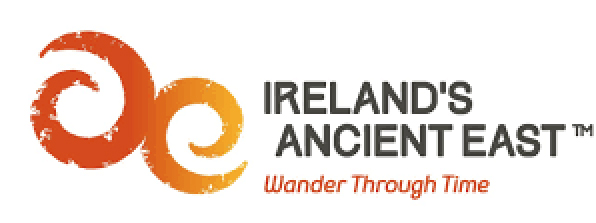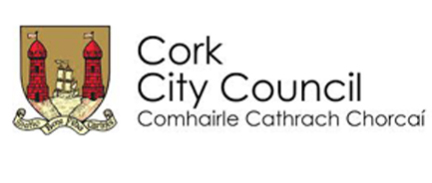The key to understanding the diverse range of medieval artefacts discovered in Cork is to know the roles played by craftsmen, with their specialised skills and by merchants, whose ships brought various products and goods from continental Europe. While much of the labour which supported the city was performed by skilled artisans, the city could not have prospered without the steady importation of raw materials, and of luxury goods from abroad. As a result, the mercantile class, which monopolised the city’s trade, held a controlling stake in the governance of the city throughout much of the medieval world.
Although most of the raw material used by Cork’s craftsmen was sourced locally, many artefacts that have been uncovered during the archaeological excavations in Cork City show the extent of trade with the wider European world.
Amber, a material which was usually sourced around the Baltic Sea, had been imported into Ireland already prior to the Viking Age - but importation was dramatically increased within a Viking context, as they established trading cities such as Dublin in Ireland, Hedeby/Schleswig in Holstein, Kaupang in Norway and Birka in Sweden. Amber continued to be imported into Ireland throughout the medieval period, as shown by the amber rosary beads discovered during archaeological digs in Cork.
Some of the stone, used in the construction of the Priory of St Mary’s of the Isle, was imported from England. In the 12th and 13th centuries, English Dunbar stone was valued above local stones, as it was easier to carve intricate details into it, and was rather durable, nevertheless, in time it fell out of favour, and later modifications on the building were made using locally sourced limestone.
Pottery fragments are among the most common medieval archaeological finds, and most easily identified artefacts found during excavations. Pottery recovered from the South Main Street archaeological sites included fragments that originated in many of the coastal regions of Europe, such as areas of modern England, Belgium, France, Spain and Portugal. Dating from the medieval and early modern periods, these fragments show that international trade remained a significant feature in the life of Cork throughout its history. However, while it is the pottery shards themselves which survive in the archaeological record, it was not so much pottery that was imported, but rather the goods held in pottery containers, especially food such as fish and preserved fruits, and liquids, including wine and olive oil.
To purchase such imports, Cork developed a heavy export trade, primarily focused on agricultural products, such as grains, and animal products, such as wool, hides and furs and dairy. Because the city relied so heavily on the importation and exportation of goods and materials around Europe, a strong mercantile class prospered and held control over the city throughout much of the medieval period. Some merchant families were able to maintain their position within society for generations - at the start of the 14th century, one prominent Cork Merchant, John de Wynchedon, bequeathed an immense fortune to his heirs. His son, Richard and grandson John de Wynchedon, would carry on the success of the family, holding important positions within the governing body of the city into the mid-14th century.
Objects uncovered from Cork’s medieval sites not only highlight trade links to foreign places but also show the skill of Cork’s local artisans. Like other cities, Cork was home for the usual medieval tradesmen: blacksmiths, leather workers, carpenters and pottery workers. However, with the coming of new materials and new skills, more specialist craftsmen emerged. This process was an outcome of the unique culture that developed in the city under the influence of the native Irish, Hiberno-Norse and Anglo-Norman peoples. Much evidence for the presence of specialised craftsmen has been found in the Christ’s Church area and on the South Main Street. Many objects they produced can be considered luxury items and were used for entertainment or leisure purposes.
These artefacts also demonstrate the increasing need to accommodate a growing city population with many interests. Cork was originally dominated by the Hiberno-Norse culture reflected in its crafting style, but it was diminished with the arrival of the Anglo-Normans and the establishment of the city walls. The Anglo-Normans brought with them increased interests in gaming, beauty maintenance and other luxury goods. The desire for luxury goods after their conquest spurred the development of skilled crafts. The use of amber as a material in the making of rosary beads shows an attraction to aesthetics, even in the ecclesiastical world. The interest in new materials could also stem from the growing contacts between Ireland and Rome, whose lavish ecclesiastical art may have impacted the church in Ireland.
Woodworking and shipbuilding were also acclaimed trades in Cork. The pole lathe was a specialised tool used by carpenters. Archaeological records of Christ’s Church excavations mention an item that may have been part of a pole lathe, and a similar artefact was found in medieval Waterford. The method of pole lathe carpentry was a specialised skill which endured throughout the centuries, having been practiced locally until the 20th century. The method involves partially working the wood on the lathe and then leaving it to dry in the sun for a period before finishing.
Sources of the Christ’s Church area record forty-four combs, which were made from antler bone. Many different types of saw for cutting bone were also discovered at the same site, an indication of local craft rather than importation of bone items. Although there is no known evidence for bone workshops in Cork, it needs to be remembered that much of the medieval city has not been excavated, and evidence for specialised craftsmen have been found in other Irish cities.
Further reading:
Gleeson, C.M., A Social Archaeology of Anglo-Norman Cork, NUI Galway, 2015.
This special online exhibition has been compiled by
Emmanuel Alden, BA in History from Kutztown University, Pennsylvania. He is presently an MA student in Medieval History, University College Cork.
David O’Mahony, BA in History & Geography from University College Cork. He is presently an MA student in Medieval History, University College Cork.
All images by Dara McGrath for Cork Public Museum
This online exhibition has been compiled as an online version of the exhibition that is on display in the permanent gallery of Cork Public Museum
Acknowledgments
This project is funded by Fáilte Ireland, Ireland’s Ancient East and Cork City Council.
![]()
 .
. 